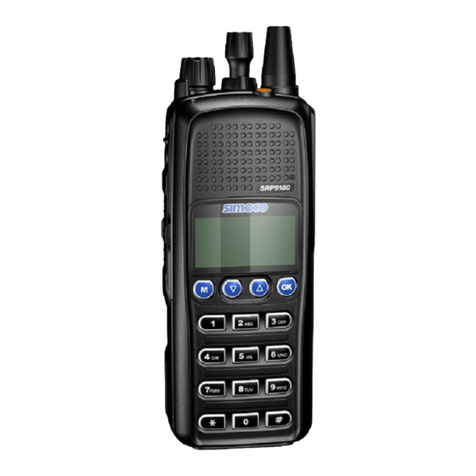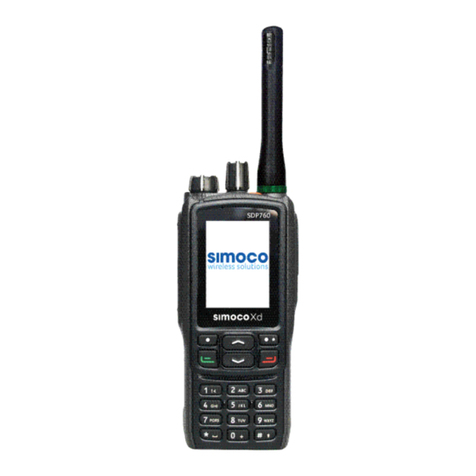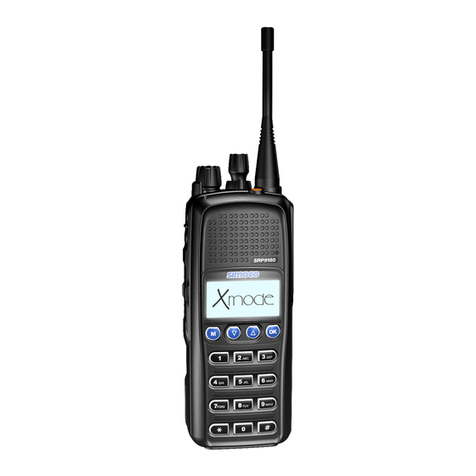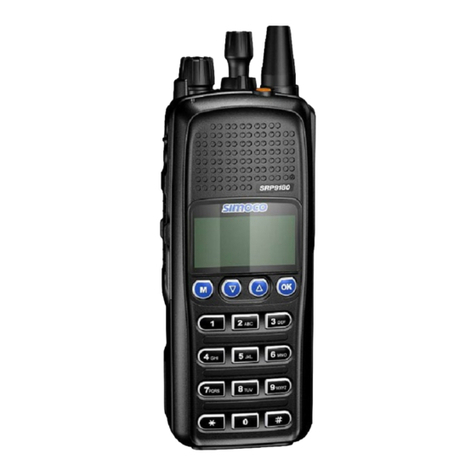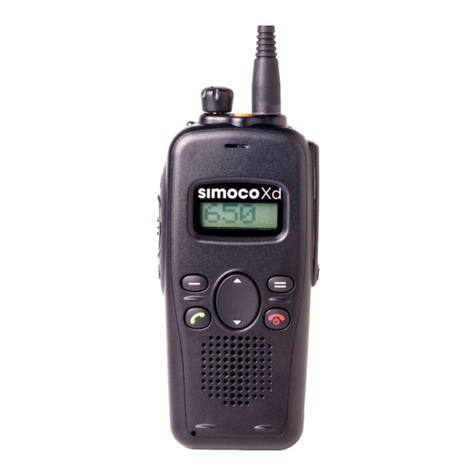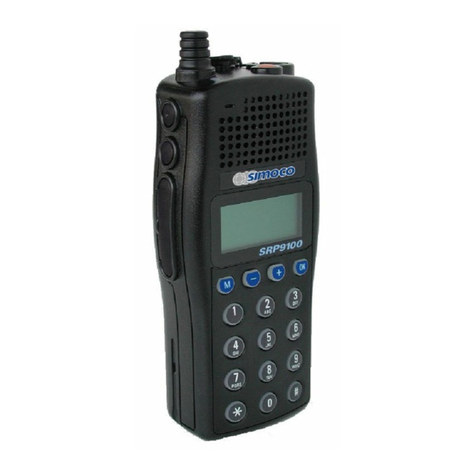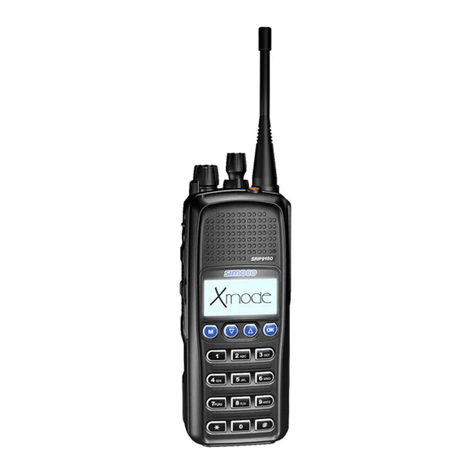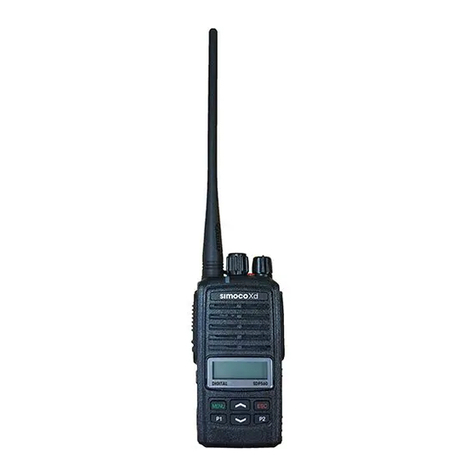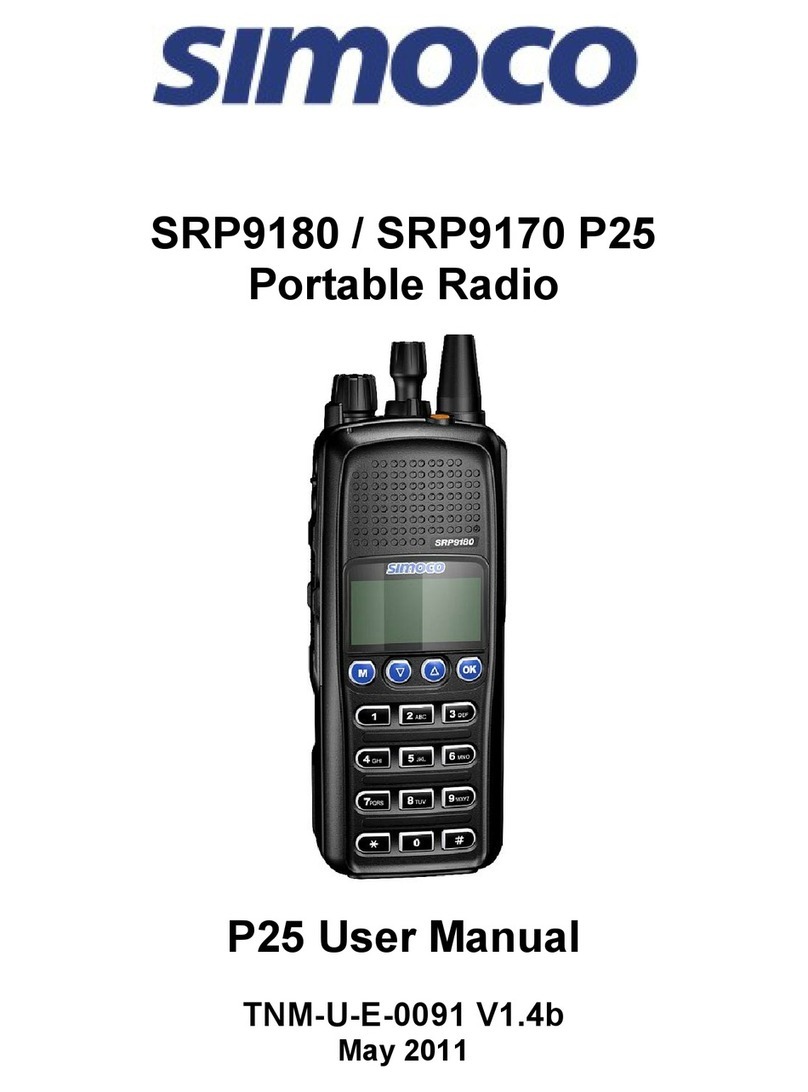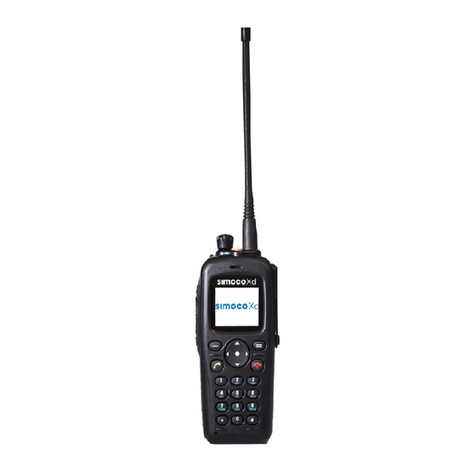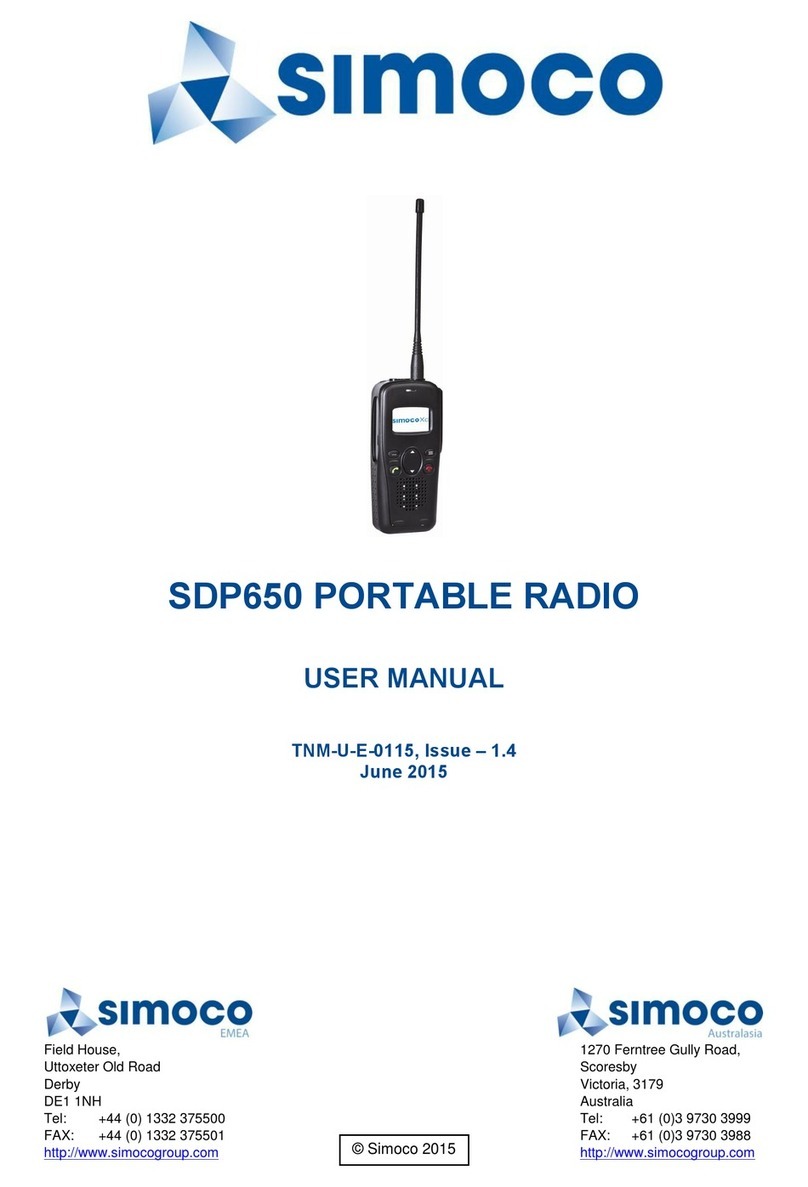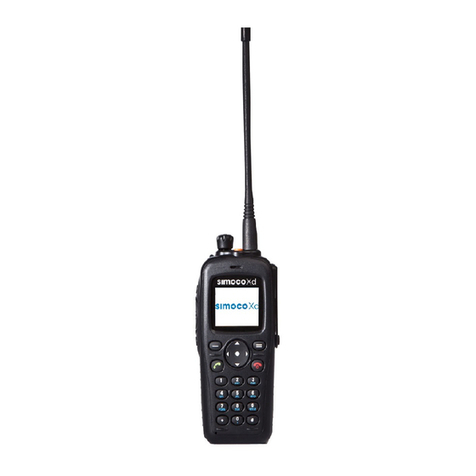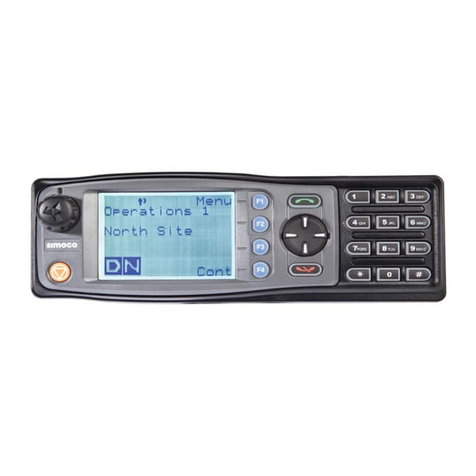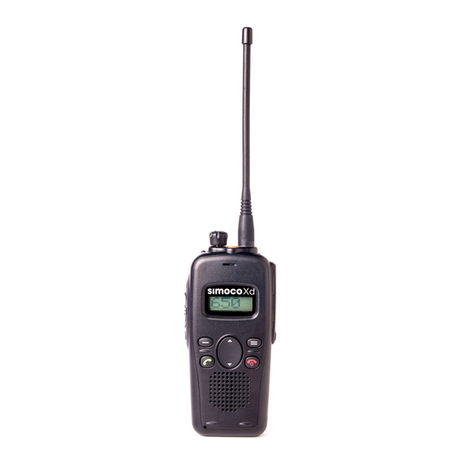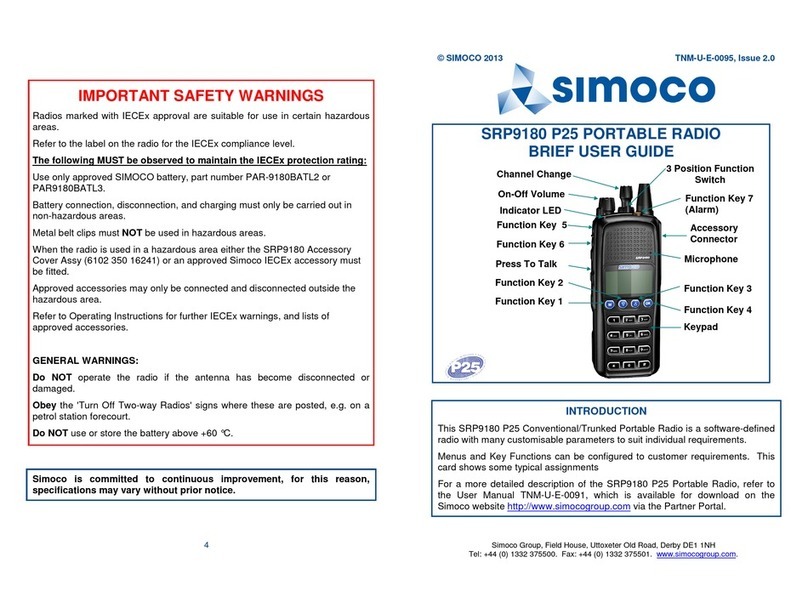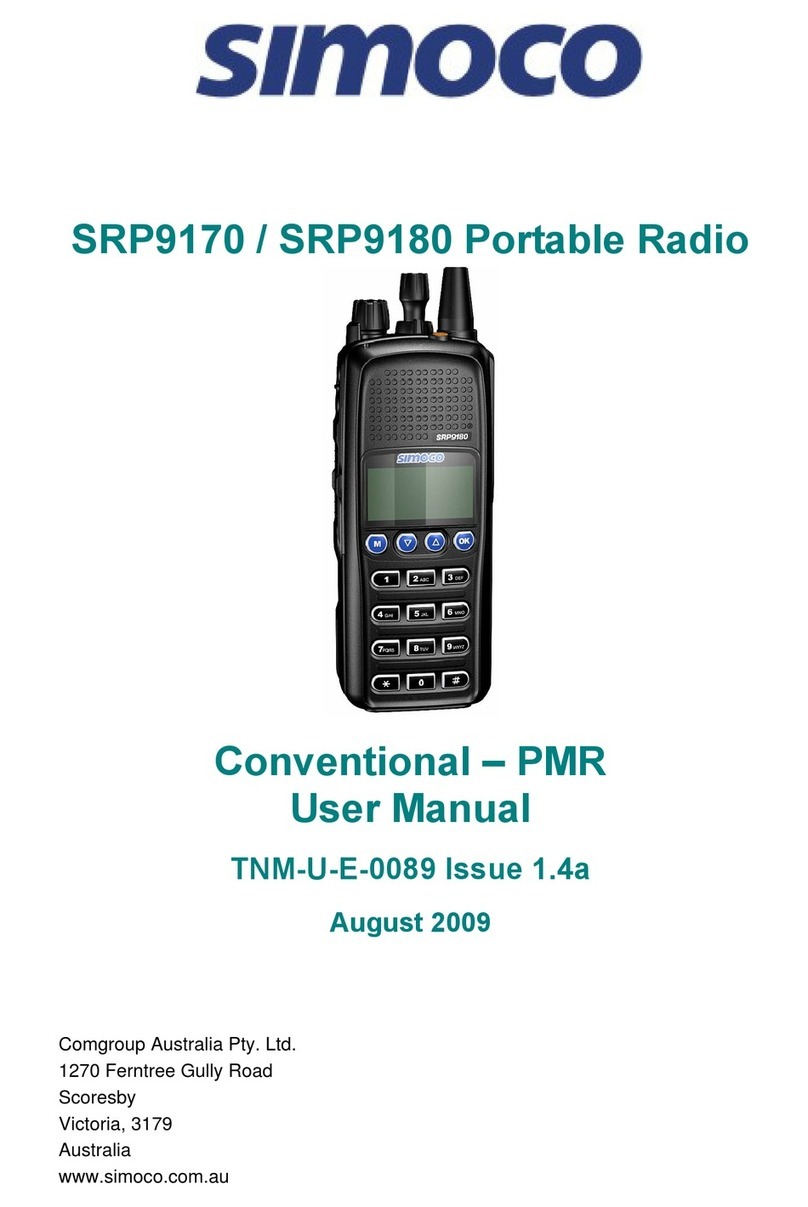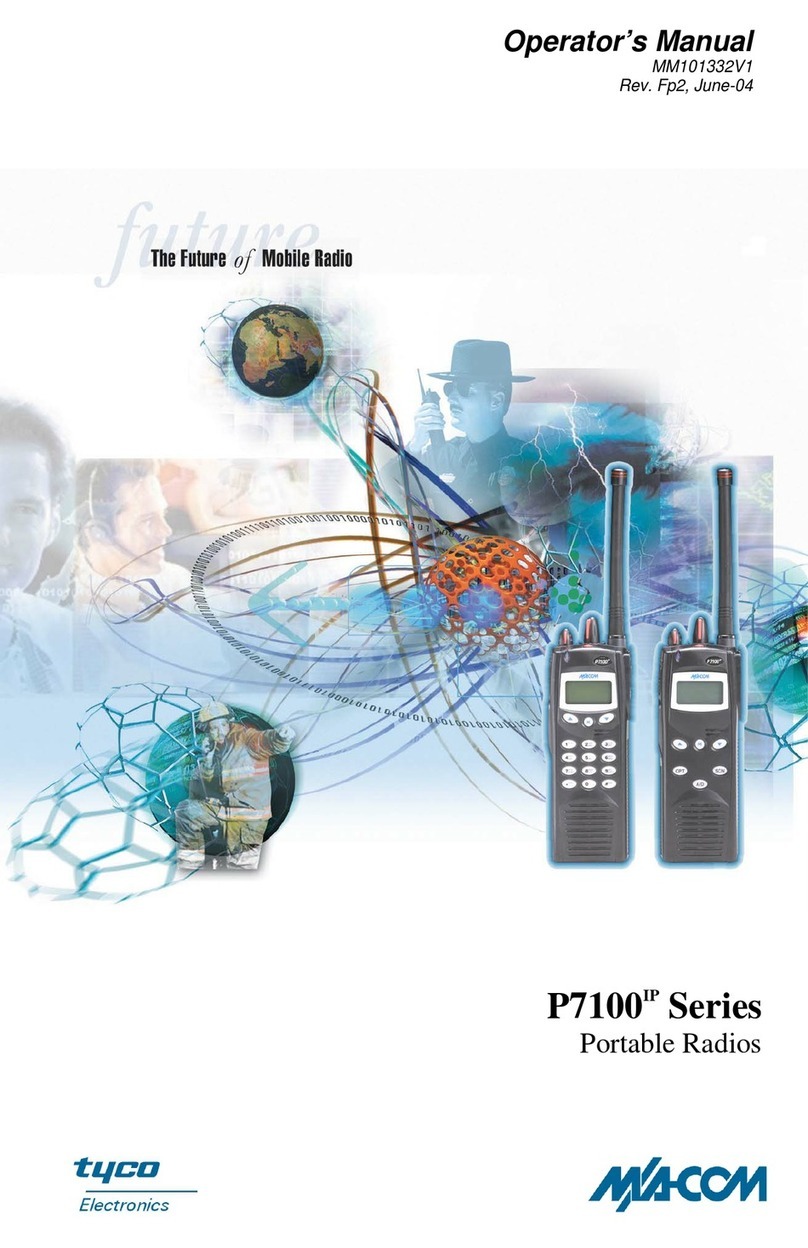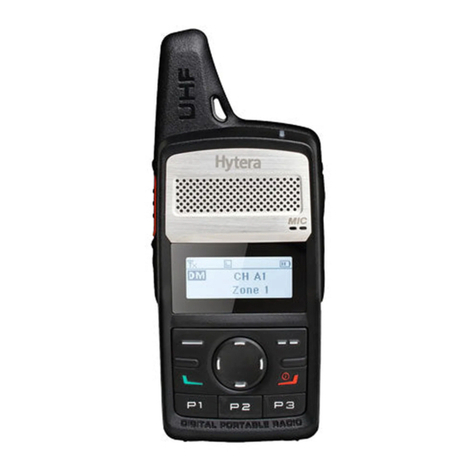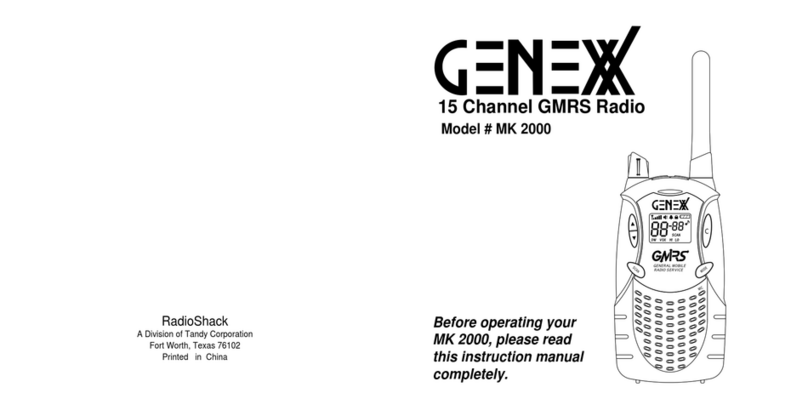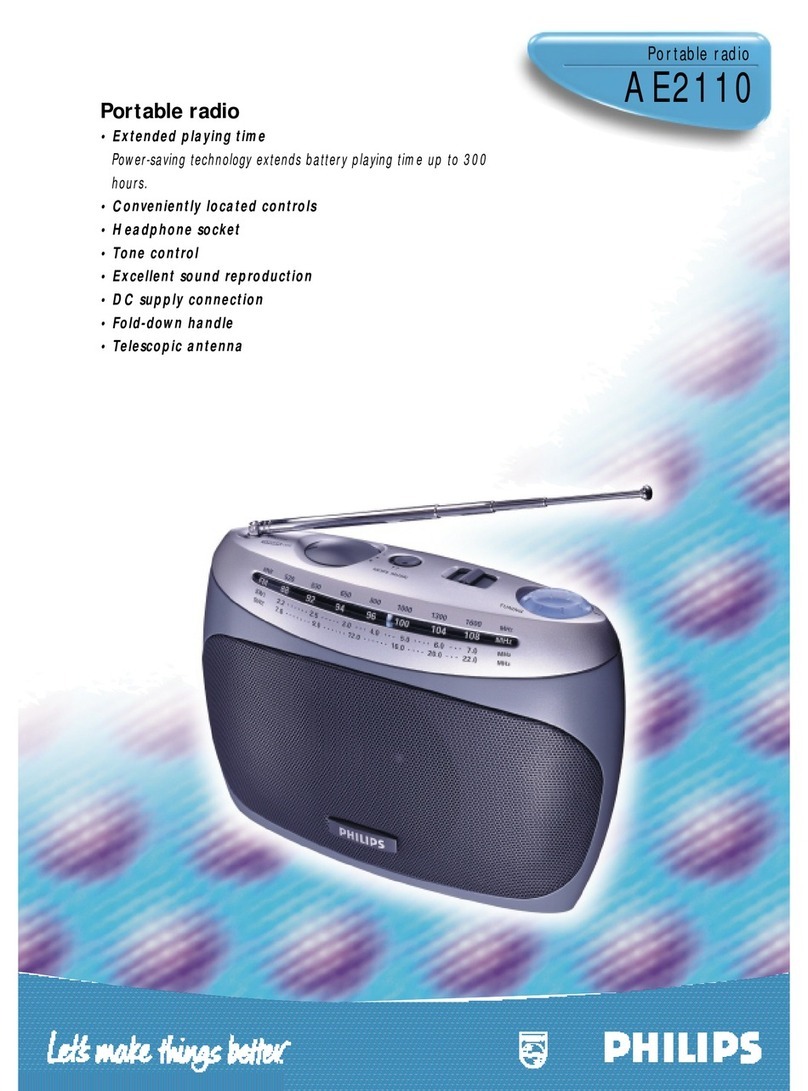
SRP9180 ~ MPT1327 Portable Radio User Manual
© Comgroup Australia 2010 page 3 TNM-U-E-0090 Issue 1.3a
General Safety
1. Do not operate your portable radio whilst driving a vehicle
2. Do not operate your radio in an explosive atmosphere
Obey the 'Turn Off Two-way Radios' signs where these are posted, e g on a
petrol station forecourt
3. Do not dispose of batteries in a fire
4. Only recharge batteries in an approved SRP9180 Charger
IECEx Intrinsically Safe Radios
Radio models approved for use in hazardous environments according to the IECEx Scheme
are marked with an approval number.
Refer to the label on the radio for the IECEx compliance level.
The following MUST be observed to maintain the IECEx protection rating:
• Use only approved SIMOCO battery, part number PAR-9180BATL2i or PAR-9180BATL3i
.
• Battery charging must only be carried out in non-hazardous areas, using an approved
battery charger.
• Metal belt clips must NOT be used in hazardous areas.
• It is a requirement that when the radio is used in a hazardous area that either the SRP9180
Accessory Cover Assy (6102 350 1446) or an approved Simoco IECEx accessory is fitted
(refer Section 8 for list of approved accessories).
• Approved accessories may only be connected and disconnected outside the hazardous
areas.
• Prior to use in a hazardous area, inspect the radio and accessories for signs of damage.
Any visible signs of damage to the radio or accessories may compromise the integrity and
safety of the radio. A damaged radio or accessories must be repaired or replaced prior to use
in a hazardous area.
• Incorrect storage, handling or operation of the radio and accessories, as specified in
Simoco published User Guides and Service Manuals, may compromise the safety and
integrity of the radio or accessories.
• Approved labels stating the IECEx rating level must be on the radio and accessories, and
be legible, before their use in a hazardous area.
Hints for Using the Radio
• When speaking, hold the radio a few centimetres from your mouth and speak across it,
rather than into it. The microphone is located near the bottom right hand corner of the
portable radio’s speaker grille.
• Keep the length of your conversation to a minimum to conserve battery life.
• When it is possible to move location, avoid making calls from known poor signal-strength
areas such as the radio system’s fringe areas (limit of range) or from screened or
shadowed areas, e.g. an underground car park or underpass.
